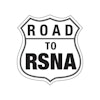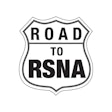Sunday, November 30 | 11:10 a.m.-11:20 a.m. | S2-SSCA01-5 | Room E353C
This cardiac imaging session highlights a study investigating whether an integrated structured reporting (SR) tool for coronary CT angiography (CCTA) could increase reader efficiency and reproducibility -- and reduce cognitive load.
CCTA interpretation and reporting can be time intensive, especially when coronary stenosis quantification, AI-enabled quantitative coronary plaque analysis, and fractional flow reserve CT (FFR-CT) require multiple reports to be generated, explained the group led by Wesley O'Neal, MD, a noninvasive cardiologist and medical director of cardiac CT and nuclear cardiology at Cone Health Heart and Vascular Center in Greensboro, NC.
The study involved 80 patients with stable chest pain or symptoms of coronary artery disease, and five independent readers consisting of three cardiologists and two radiologists (all Society of Cardiovascular Computed Tomography [SCCT] Level 3) from two sites.
Each reader interpreted 40 CCTA cases without SR and using a site-defined clinical workflow, as well as 40 cases with SR and a prepopulated, fully editable template. Interpretation of one batch of 10 CCTAs was permitted per day using local-site software for postprocessing and reporting.
To determine the differences in reporting times, the group used CCTA datasets to generate combined reports for AI-enabled stenosis quantification, plaque analysis, and FFR-CT, and provided them to each reader. Using the structured reporting tool, interpretation time per case was 40.2% shorter, O'Neal and colleagues found. Report agreement was also significantly higher with the SR tool versus without it, they noted.
Interested in the possibility of efficiency improvements using structured reporting? Drop into this session right before lunch and get the details.



